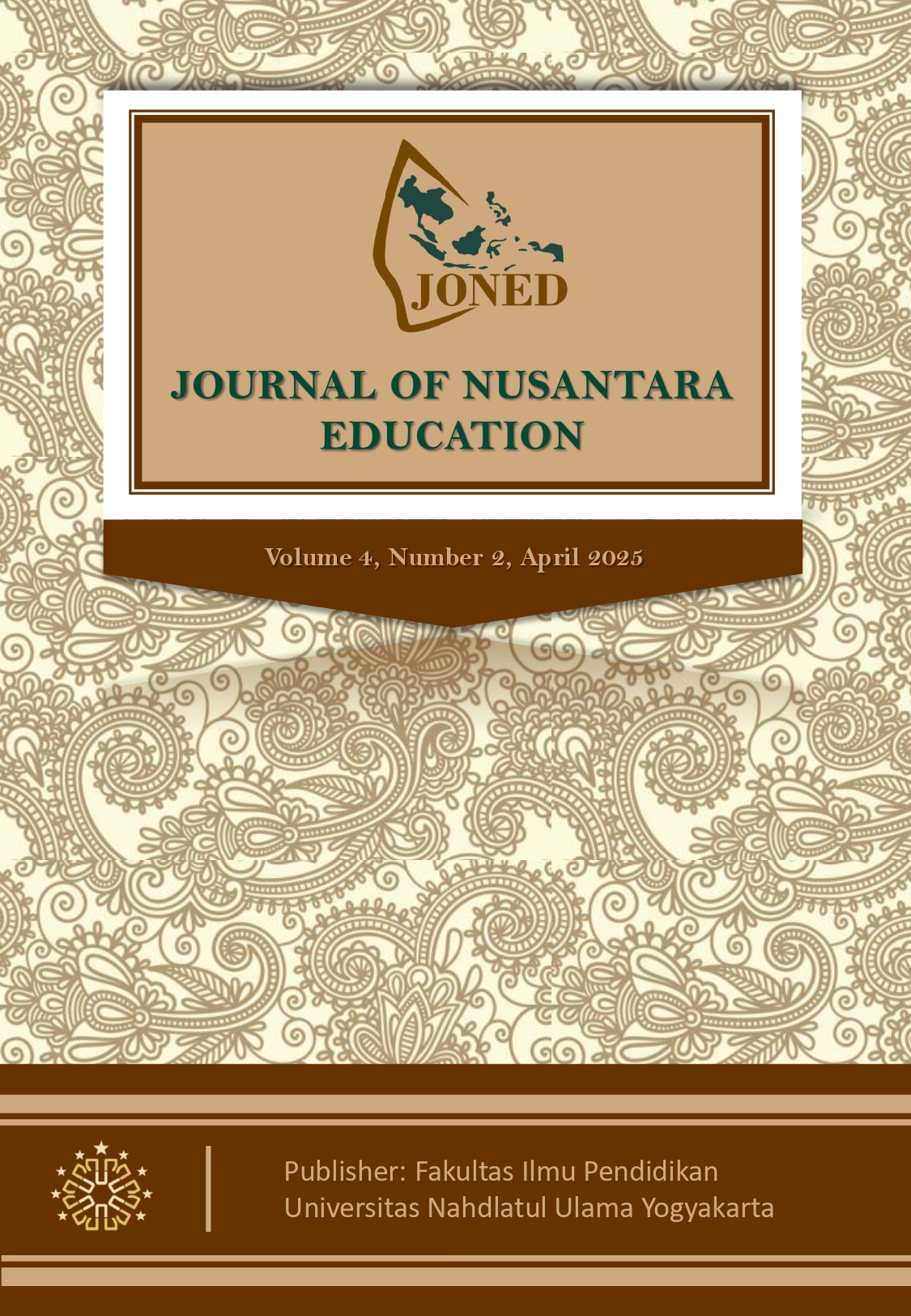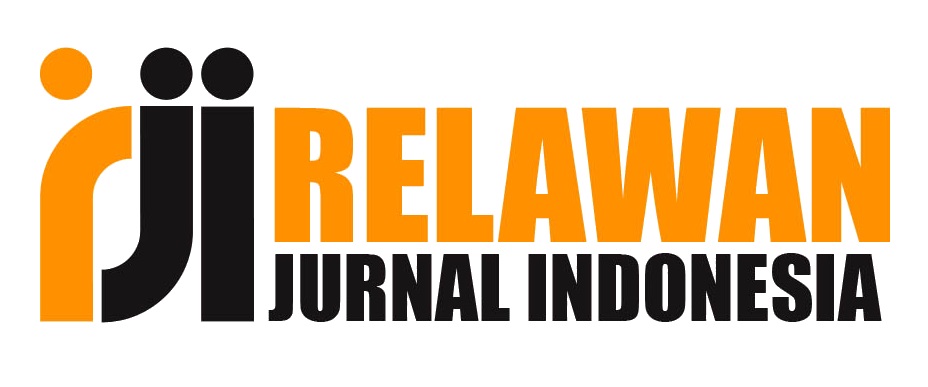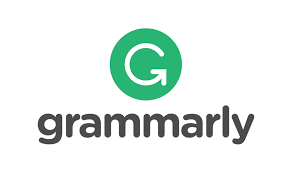Persepsi Guru dalam Penerapan Pembelajaran Berdiferensiasi di SD N Bandar Jaya
DOI:
https://doi.org/10.57176/jn.v4i2.138Keywords:
pembelajaran berdiferensiasi, persepsi guru, tantanganAbstract
Di era pendidikan yang semakin beragam, pendekatan yang berpusat pada siswa melalui pembelajaran berdiferensiasi menjadi kunci untuk mengakomodasi kebutuhan dan potensi setiap peserta didik. Tujuan penelitian ini adalah untuk mengetahui bagaimana persepsi guru terhadap penerapan pembelajaran berdiferensiasi di SDN Bandar Jaya. Pembelajaran berdiferensiasi merupakan jenis pembelajaran yang menekankan pada kebutuhan dan kemampuan setiap siswa. Penelitian ini menggunakan metode studi kasus dan pendekatan kualitatif. Data dikumpulkan melalui survei, wawancara, dan dokumentasi. Partisipan dalam penelitian ini adalah . Untuk menganalisis data, peneliti melakukan pemilihan data, menyajikan data dan menarik kesimpulan. Berdasarkan hasil penelitian, guru sudah memiliki pandangan yang positif tentang pembelajaran berdiferensiasi dan sudah memahami konsep pembelajaran berdiferensiasi dengan baik, penerapan strategi yang digunakan guru dalam pembelajaran berdiferensiasi yaitu strategi konten, strategi proses, dan strategi produk. Dengan penerapan pembelajaran berdiferensiasi terdapat dampak hasil belajar siswa lebih meningkat dan menjadikan siswa lebih kreatif. Dalam penerapan pembelajaran berdiferensiasi ini terdapat tantangan dan hambatan yang dialami oleh guru yaitu keterbatasan waktu, kemampuan siswa yang beragam, sarana dan prasarananya yang masih terbatas, dan keterbatasan kemampuan guru. Sekolah juga memberikan solusi terhadap tantangan atau hambatan yang dihadapi oleh guru di SD Bandar Jaya, sehingga pembelajaran yang lebih efektif dan inklusif dapat tercapai.
______________________________________________________________________________
Abstract
In an increasingly diverse educational era, a student-centered approach through differentiated learning has become key to accommodating the needs and potentials of each student. The aim of this study is to explore teachers' perceptions of the implementation of differentiated learning at SD N Bandar Jaya. Differentiated learning is a type of learning that focuses on the needs and abilities of each student. This study uses a case study method and a qualitative approach. Data were collected through surveys, interviews, and documentation. Participants in this study were all teachers at SD N Bandar Jaya, totaling 8 (eight) teachers who had implemented differentiated learning, namely grade I-VI teachers, sports teachers, and the principal of SD Negeri Bandar Jaya. To analyze the data, the researcher performed data selection, presentation, and conclusion drawing. Based on the results, teachers already have a positive perspective on differentiated learning and have a good understanding of the concept. The strategies used by teachers in differentiated learning are content strategies, process strategies, and product strategies. With the implementation of differentiated learning, there has been an increase in student learning outcomes, making students more creative. However, there are challenges and obstacles faced by teachers in implementing differentiated learning, including time constraints, diverse student abilities, limited facilities, and teachers' limited capabilities. The school also provides solutions to these challenges and obstacles faced by teachers at SDN Bandar Jaya, enabling more effective and inclusive learning.
References
Azizah, M., Budiman, M. A., & Widyaningrum, A. (2023, December). Analisis Kesulitan Guru Sekolah Dasar dalam Implementasi Pembelajaran Berdiferensiasi pada Kurikulum Merdeka. In Seminar Nasional Hasil Penelitian dan Pengabdian Kepada Masyarakat (Vol. 4, pp. 199-208).
Creswell, J. W. (2019). Research design: Pendekatan metode kualitatif, kuantitatif dan campuran.
Deunk, M. I., Smale-Jacobse, A. E., de Boer, H., Doolaard, S., & Bosker, R. J. (2018). Effective differentiation practices: A systematic review and meta-analysis of studies on the cognitive effects of differentiation practices in primary education. Educational Research Review, 24, 31-54.
Fachrina, A. Z., Gusrayani, D., & Djuanda, D. (2024). Persepsi Guru Mengenai Pembelajaran Berdiferensiasi Di Sd Negeri Gandasari II. EDU RESEARCH, 5(3), 30-39.
Faiz, A., Pratama, A., & Kurniawaty, I. (2022). Pembelajaran berdiferensiasi dalam program guru penggerak pada modul 2.1. Jurnal basicedu, 6(2), 2846-2853.
Fauzia, R., & Ramadan, Z. H. (2023). Implementasi pembelajaran berdiferensiasi dalam Kurikulum Merdeka. Jurnal Educatio FKIP UNMA, 9(3), 1608-1617.
Fitriah, I., & Widiyono, A. (2023). Analisis Kesulitan Pembelajaran Berdiferensiasi pada Materi Bagian Tubuh Tumbuhan di Sekolah Dasar. Indo-MathEdu Intellectuals Journal, 4(2), 961-974.
Isrokatun, I., Sunaengsih, C., Maulana, M., Syahid, A. A., Karlina, D. A., & Rohaeti, P. (2023). Miskonsepsi Guru Sekolah Dasar Mengenai Pemahaman Pembelajaran Berbasis HOTS. DWIJA CENDEKIA: Jurnal Riset Pedagogik, 7(3).
Marlina, M. (2019). Panduan Pelaksanaan Model Pembelajaran Berdiferensiasi di Sekolah Inklusif.
Mastropieri, M. A., & Scruggs, T. E. (2010). The inclusive classroom: Strategies for effective differentiated instruction. (No Title).
Miller, M., Ridgway, N., & Ridgway, A. (2019). Don’t ditch that tech: Differentiated instruction in a digital world. Dave Burgess Consulting.
Mulyanto, A., Agustini, T., Stefanie, S., & Irnawati, R. (2023). Pelatihan Model Pembelajaran Berdiferensiasi Dalam Implementasi Kurikulum Merdeka Sekolah Dasar di Kecamatan Rancakalong Kabupaten Sumedang. Jurnal Abdimas Bina Bangsa, 4(2), 1660-1671
Nevid, J. S., & Chozim, M. (2021). Sensasi dan Persepsi: Konsepsi dan Aplikasi Psikologi. Nusamedia.
Onyishi, C. N., & Sefotho, M. M. (2020). Teachers' Perspectives on the Use of Differentiated Instruction in Inclusive Classrooms: Implication for Teacher Education. International Journal of Higher Education, 9(6), 136-150.
Pane, R. N. P. S., Lumbantoruan, S., & Simanjuntak, S. D. (2022). Implementasi pembelajaran berdiferensiasi untuk meningkatkan kemampuan berpikir kreatif peserta didik. BULLET: Jurnal Multidisiplin Ilmu, 1(03), 173-180.
Pebriyanti, D. (2023). Pengaruh implementasi pembelajaran berdiferensiasi pada pemenuhan kebutuhan belajar peserta didik tingkat sekolah dasar. Jurnal Kridatama Sains dan Teknologi, 5(01), 89-96.
Smale-Jacobse, A. E., Meijer, A., Helms-Lorenz, M., & Maulana, R. (2019). Differentiated instruction in secondary education: A systematic review of research evidence. Frontiers in psychology, 10, 2366.
Sutinah, C., & Ristiana, M. G. (2023). The Development of Assisted Worksheets Differentiation Learning Based on Learning Style: How Great It Can Help Students’mathematical Understanding Ability? Jurnal Cakrawala Pendas, 9(2), 205-214.
Suwanjal, U., & Apriani, R. (2023, August). Peran guru penggerak dalam mewujudkan aksi nyata di sekolah sebagai bentuk pendidikan yang berpihak kepada murid melalui pembelajaran berdiferensiasi. In Prosiding Seminar Nasional Penelitian dan Pengabdian kepada Masyarakat (SNPPM) Universitas Muhammadiyah Metro (Vol. 5, No. 1, pp. 257-271).
Tomlinson, C. A. (2001). How to differentiate instruction in mixed-ability classrooms. Ascd.
Usman, U., Lestari, I. D., Alfianisya, A., Octavia, A., Lathifa, I., Nisfiyah, L., ... & Oktatira, R. (2022). Pemahaman salah satu guru di man 2 tangerang mengenai sistem pembelajaran berdiferensiasi pada kurikulum merdeka. Jurnal Review Pendidikan Dan Pengajaran (JRPP), 5(1).
Downloads
Published
How to Cite
Issue
Section
License
Copyright (c) 2025 Silfi Nurkhasanah, MIftahul Mahrus

This work is licensed under a Creative Commons Attribution-ShareAlike 4.0 International License.
You are free to:
- Share — copy and redistribute the material in any medium or format for any purpose, even commercially.
- Adapt — remix, transform, and build upon the material for any purpose, even commercially.
- The licensor cannot revoke these freedoms as long as you follow the license terms.
Under the following terms:
- Attribution — You must give appropriate credit , provide a link to the license, and indicate if changes were made . You may do so in any reasonable manner, but not in any way that suggests the licensor endorses you or your use.
- ShareAlike — If you remix, transform, or build upon the material, you must distribute your contributions under the same license as the original.
- No additional restrictions — You may not apply legal terms or technological measures that legally restrict others from doing anything the license permits.
Notices:
You do not have to comply with the license for elements of the material in the public domain or where your use is permitted by an applicable exception or limitation .
No warranties are given. The license may not give you all of the permissions necessary for your intended use. For example, other rights such as publicity, privacy, or moral rights may limit how you use the material.
















